Lake Maggiore: Hemingway’s hideaway for stress
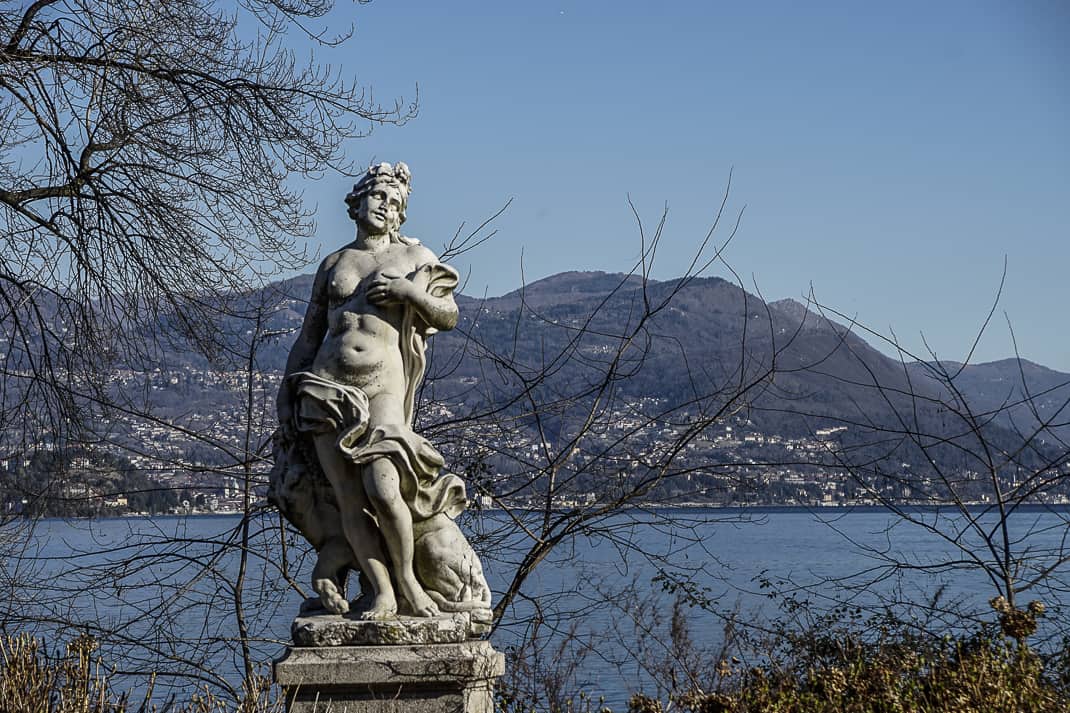
“I’m in a hotel in Stresa, a little resort on Lake Maggiore. One of the most beautiful Italian lakes.” – In a letter 19-year-old Ernest Hemingway wrote to his parents in 1918.
STRESA, Italy – I’m not a huge Hemingway fan. His sentence structure takes “Brevity is best” to an absurd level. (Rain came down. Rain is cold. Rain is good.) His stories sometimes make no sense. (I read “Snows of Kilimanjaro” twice while I climbed Kilimanjaro and had no idea what he said.) “The Green Hills of Africa” bored me.
But boy, did Hemingway have good taste in travel.
I toured his old houses in Cuba and Key West, lavish, sprawling palaces under huge trees near the Caribbean Sea. I saw his old apartments in Paris’ bustling Latin Quarter, where I stay every time I visit Paris.
Last week I went to one of Hemingway’s favorite haunts, a place so beautiful it inspired one of his books I actually liked.
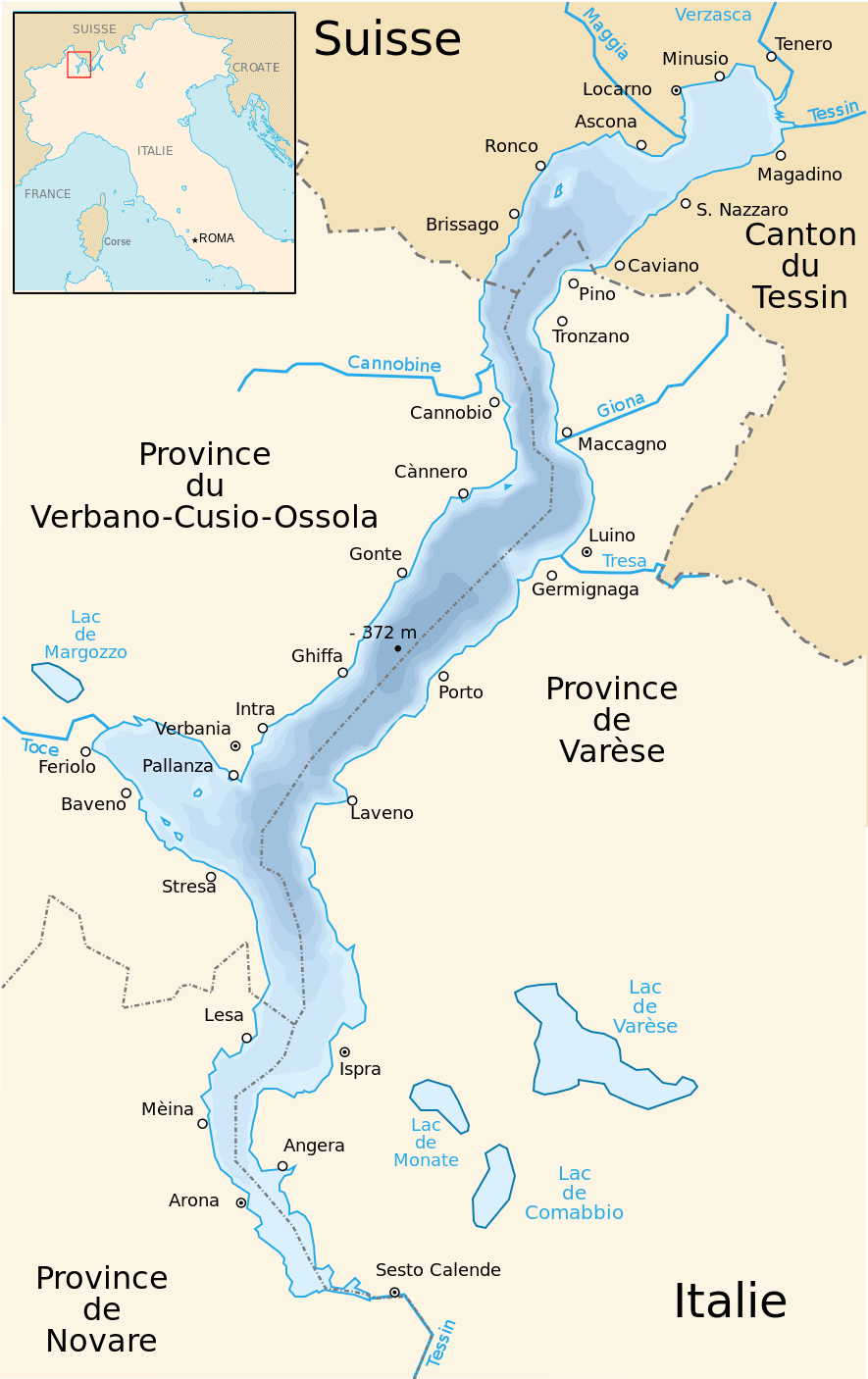
“A Farewell to Arms” is about a young ambulance driver who falls in love with a nurse while convalescing from injuries in Italy during World War I. The novel is semi-autobiographical. In 1918 Hemingway did suffer 227 shrapnel wounds in his legs when a mortar exploded in a hole he shared with Italian soldiers.
He spent six months recovering in a Milan hospital but in his second month he received a 10-day pass. He went an hour north to Stresa, a small town on Lake Maggiore where little islands sit 400 meters off shore and the promenade is lined with stately hotels and swaying palm trees.
He stayed in a suite at the Grand Hotel des Iles Borromees and he returned frequently to his old suite that now bears his name.
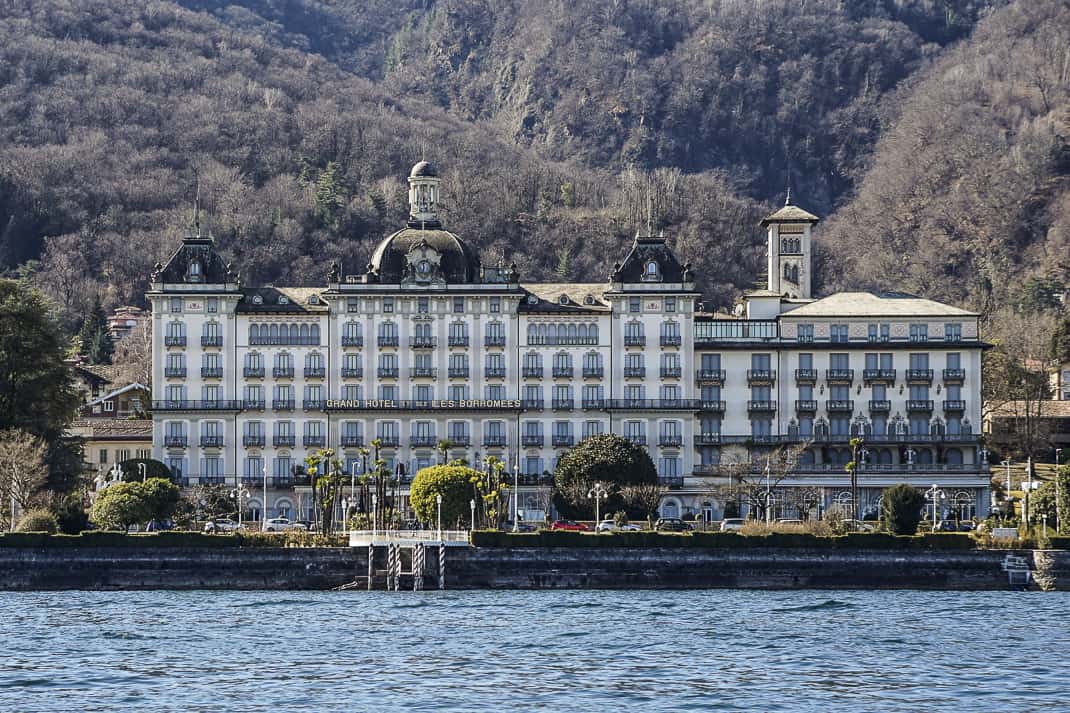
I didn’t stay in the Grand Hotel’s Hemingway Suite. It’s 3,300 euros a night. Besides, it was closed like more than 75 percent of the town. It was February in Italy, still a great time to visit one of the most beautiful lakes in Europe and one of the most visited areas in Italy.
Tourists were few. Barolo, my favorite wine in the world, poured from every open enoteca. Walks along the lake were quiet and uncrowded, chilly but sunny. And wait until I tell you about the best risotto on the planet.
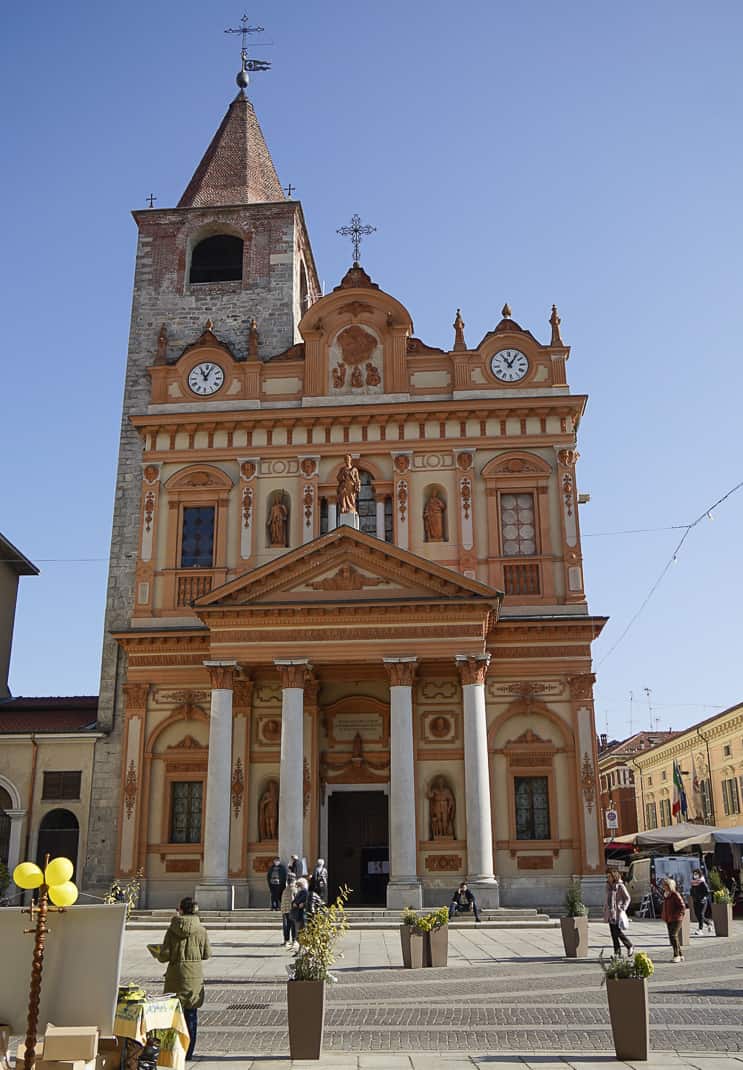
Borgomanero
I came here in February on the tail end of Marina’s WordPress conference in Borgomanero, 30 kilometers (18 miles) south of Stresa. It’s best known as a base for exploring Lake Maggiore and to the east, Lake Lugano when towns like Stresa get filled.
Borgomanero (pop. 22,000) is a good place to kick back in a real Italian town where the lone commercialization is for locals.
It has a pleasant walking mall highlighted by Piazza Martiti, anchored by Parrocchiale di San Bartolomeo, a giant orange-and-yellow pile of Baroque confection that was refurbished in 1680 on a spot where a church has stood since 1225.
The best part about Borgomanero, like Lake Maggiore, is it’s in the Italian region of Piedmont. Piedmont is to Italian wine what the Eiffel Tower is to Paris architecture. I firmly believe that if you take a case of Barolo to Ukraine, you’d end the war in a week.
It’s so rich, so smooth, so deep, it turns the most vile mood into one wishing only for bliss, peace and love. In Piedmont, I drink it with everything from pasta to pretzels.
And Barolo is everywhere. Even restaurants’ house wine is Nebbiolo, the grape from which Barolo is made. It went especially well at Hostaria Orcobacco where I had the agnolotti ripieni di zucca al burro e salvia con amaretto croccante.
That’s a syrupy romantic way to describe square ravioli filled with pumpkin, butter and sage topped with crispy macaroon crumbles.
I always believed pumpkins should be carved, not eaten. But the sweet trappings made it one of the best raviolis of my life.

To Lake Maggiore
Getting to Stresa, 90 kilometers (50 miles) northwest of Milan, was maddingly difficult thanks to Trenitalia’s mouse-in-a-maze routing system. There is no direct trainline.
Due to Marina’s complete refusal to wake up for a more direct 8:15 a.m. bus, we went south and changed at Novara. We then went east and changed at Rho a Milano, Milan’s fairgrounds. Then north we went until we reached Stresa, taking more than two hours to cover 18 miles. It took us only three hours to take an Italo train from Rome to Milan 571 kilometers (343 miles) away.
As we walked down the hill from Stresa’s train station and meandered through the historical district’s windy, narrow streets, we knew it was worth it.
This town that receives 500,000 tourists a year was deathly quiet. Boutique stores were closed. So were restaurants. No residents were on their stoop chatting with neighbors, the postcard of everyday Italian life.
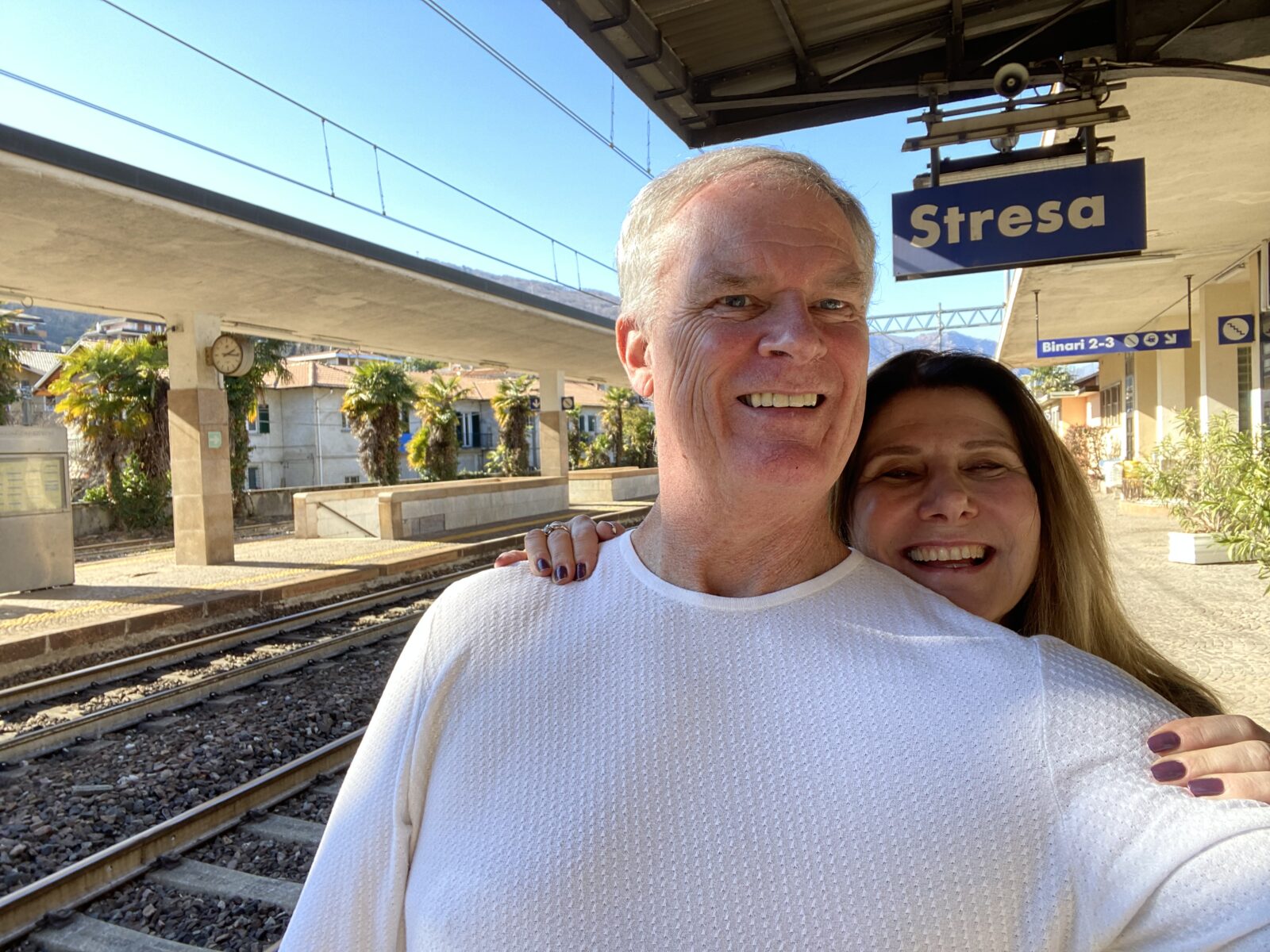
Our three-star Hotel Panoramic was one block off the lake and next door to Al Buscion, an enoteca (“buscion” means “cork” in the Piemontese dialect) where I whiled away afternoons drinking Barolo outside next to heated coals. The Cambusa Wine Shop, on the next corner from our hotel, has been around 63 years and half its back wall is Barolo wine.
Let’s see. Barolo. A lake. No tourists. Sunny weather. Like black cherry gelato and the region of Abruzzo, Italy in winter is truly underrated.
Keep in mind part of Italy’s majestic beauty comes from its lakes, particularly in Northern Italy where Maggiore, Lagano and Como rest side by side by side like three sunbathing temptresses in bikinis, luring mobs every summer.
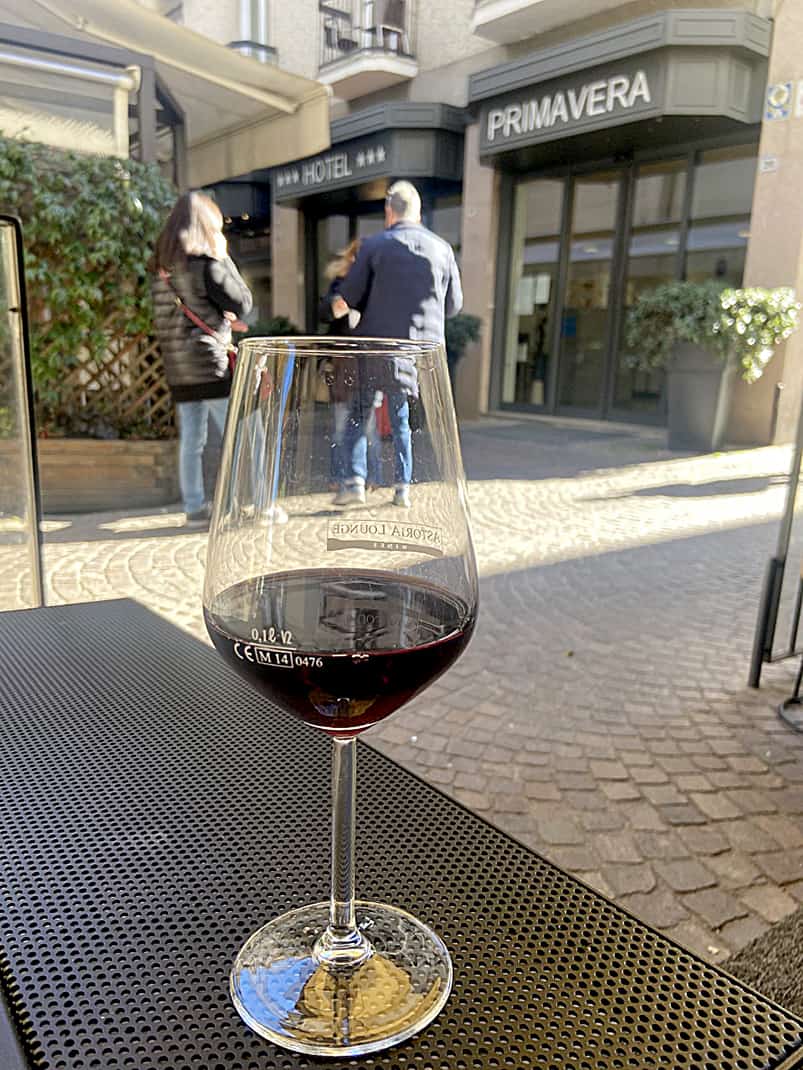
Lake Maggiore snakes up from Arona, Italy, 65 kilometers (40 miles) to Lucarno, Switzerland, and is 10 kilometers (six miles) wide. Stresa (pop. 5,000) sits on the western shore 18 kilometers (10 miles) north of Arona.
We dropped our bags and walked to the promenade that stretches up and down the lake. Maggiore’s royal blue blended seamlessly with the blue sky. A small fishing boat motored peacefully with the brown foothills of the Italian Alps looming in the background.
This scene inspired Hemingway to write one of the great novels in American literature; I hoped merely it could inspire me to write this blog.
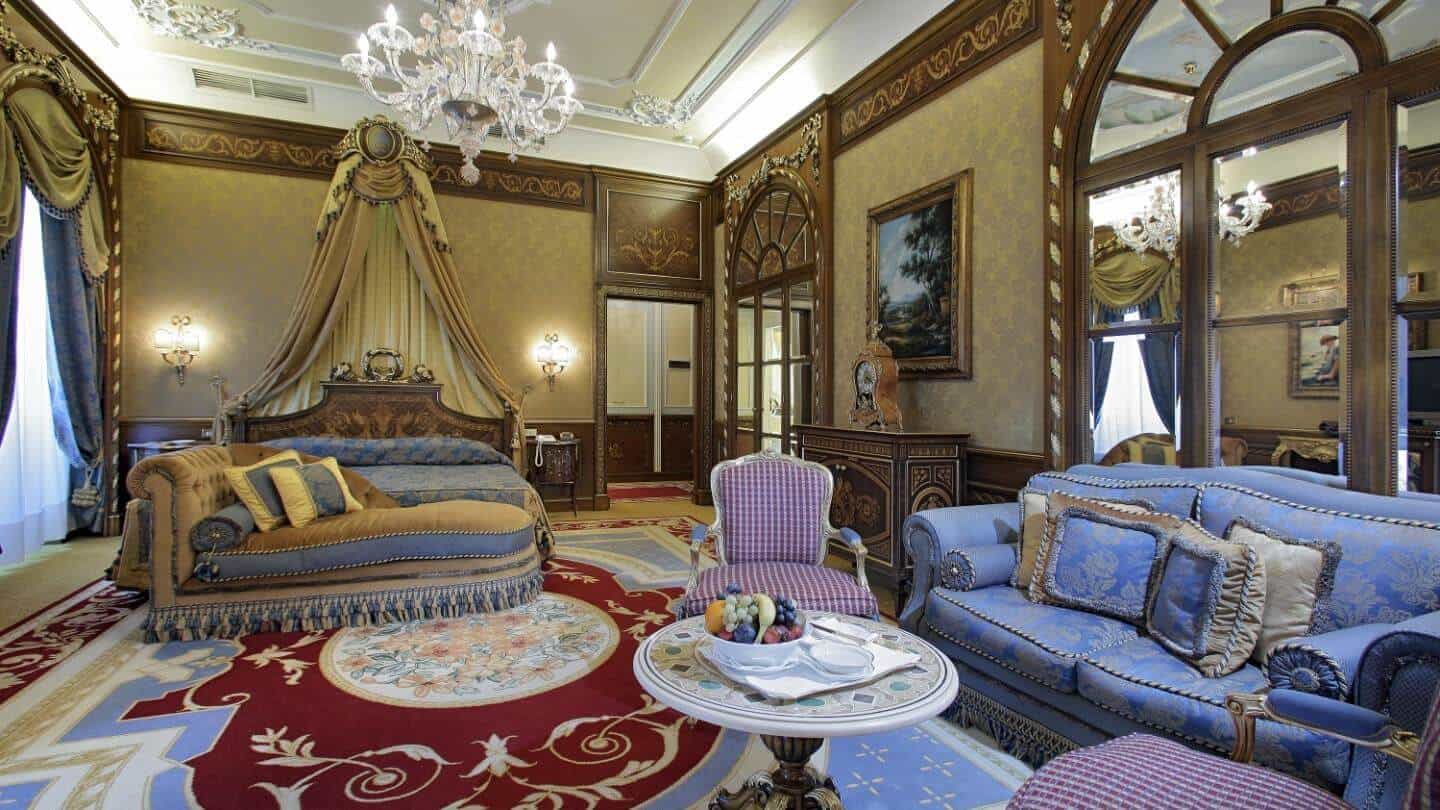
Hemingway’s Stresa
Most of Stresa didn’t open until March 4. The lavish gardens open to the public were closed. The long string of historical, gargantuan hotels built before any world war made Stresa’s shoreline look like a movie set in the 19th century. Standing out among them all is the Grand Hotel des Iles Borromees.
Built in 1863, the Grand Hotel is a pearly white beauty with all lakeside rooms sporting an iron balcony a thrown cornetto from the lake. Filling the lobby are lush red carpets, chandeliers and fountain pens in inkwells. What better place to recover from 227 pieces of shrapnel in your leg?
As Hemingway quoted Frederick Henry, his main character, in “A Farewell to Arms” about his convalescent digs:
“It was very big and light and looked out on the lake. The clouds were down over the lake but it would be beautiful with the sunlight.”

He returned in 1948 and today the hotel posts his signature from the guestbook that stated, in Hemingway minimalist style, “An old client.”
Today his suite has become a tourist attraction and a crib for the filthy rich. It is indeed 3,300 euros ($3,600). It covers 240 square meters (2,580 square feet) and includes three bedrooms, a living room, four bathrooms, a 160 square meter terrace all with a view of the lake, islands and Alps beyond.
The walls are yellow Sienese marble with stuccos and oil paintings and frescoes adorn the ceiling. The fireplace is the original, and the chandeliers are Murano glass. Even the doors are artwork, made with inlaid mother of pearl, copper and brass. Oh, yes. There’s a whirlpool lined with mosaics.
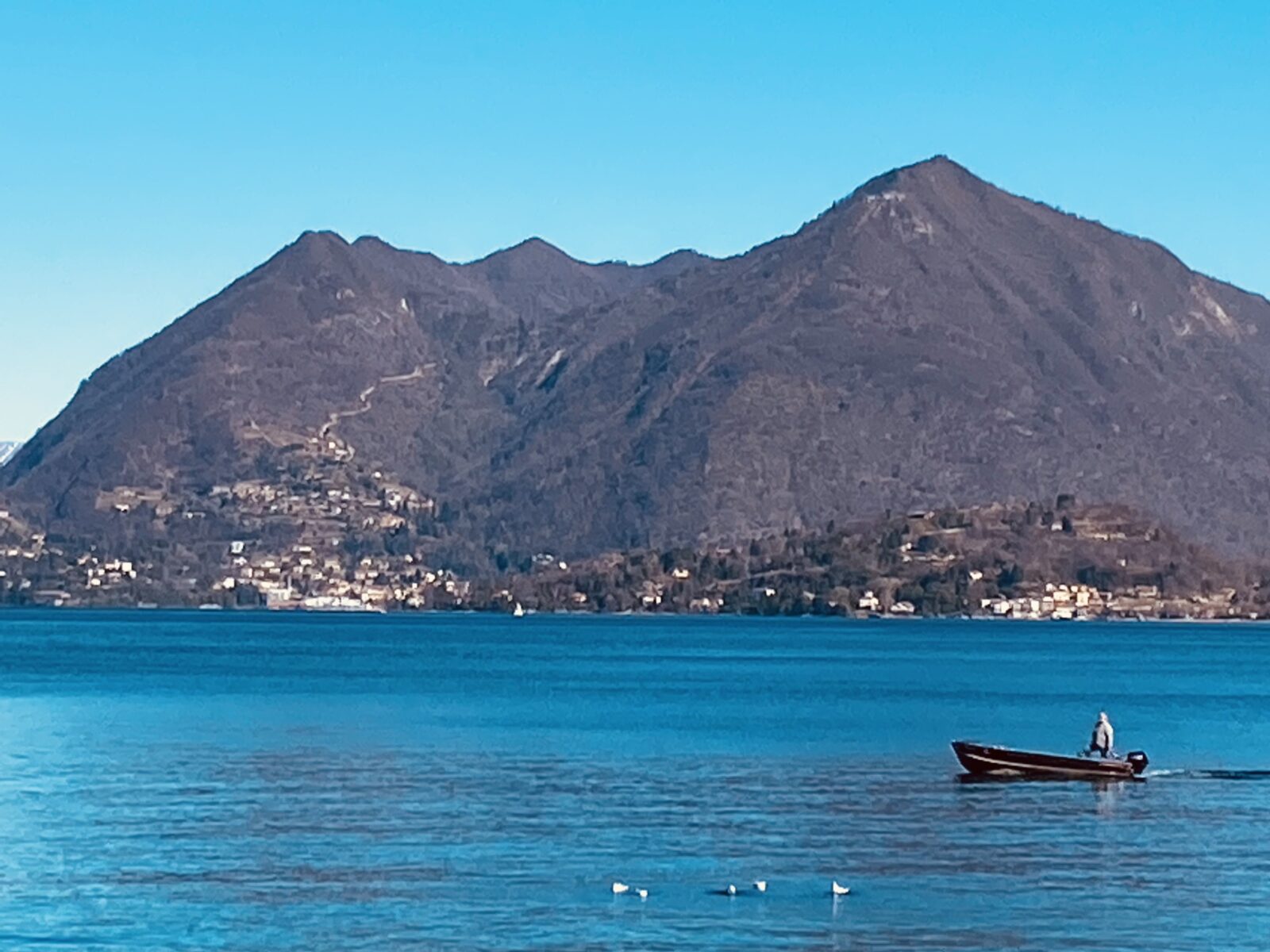
The bar is new but it still sports a Hemingway Special. I’m assuming it’s a dry martini which Hemingway used to drink with the bartender, Emilio. Hemingway would visit the islands and fish from a small boat, similar to the ones I saw plying the waters every day.
Hemingway always said Stresa made him feel like home. It’s why he kept coming back. As he also wrote:
“Down below were the gardens, bare now but beautifully regular, the gravel paths, the trees, the stone wall by the lake and the lake in the sunlight with the mountains beyond.”

Isola Bella
On our next morning we took a boat the 400 meters to Isola Bella, one of three tiny islands along with Madre and Superiore. They were mere rocky crags until 1632 when the Borromeos, a family of Milan nobles, bought them. Carlo III built a palace dedicated to his “bella” wife which begat the island’s name.
Isola Bella soon became one of the places to be seen in Italy. It was the site of big parties and theater performances, attracting visitors such as Napoleon Bonaparte and his wife. It has held a music festival for the last 60 years.
Today only 40 people live on the island. Only 20 were there when we visited along with about a dozen other people from the boat. In July, Isola Bella might sink from the weight of the boatloads of tourists. Instead, we walked past the old palace in solitude, stared out at the glassy lake and the palm trees of Stresa.
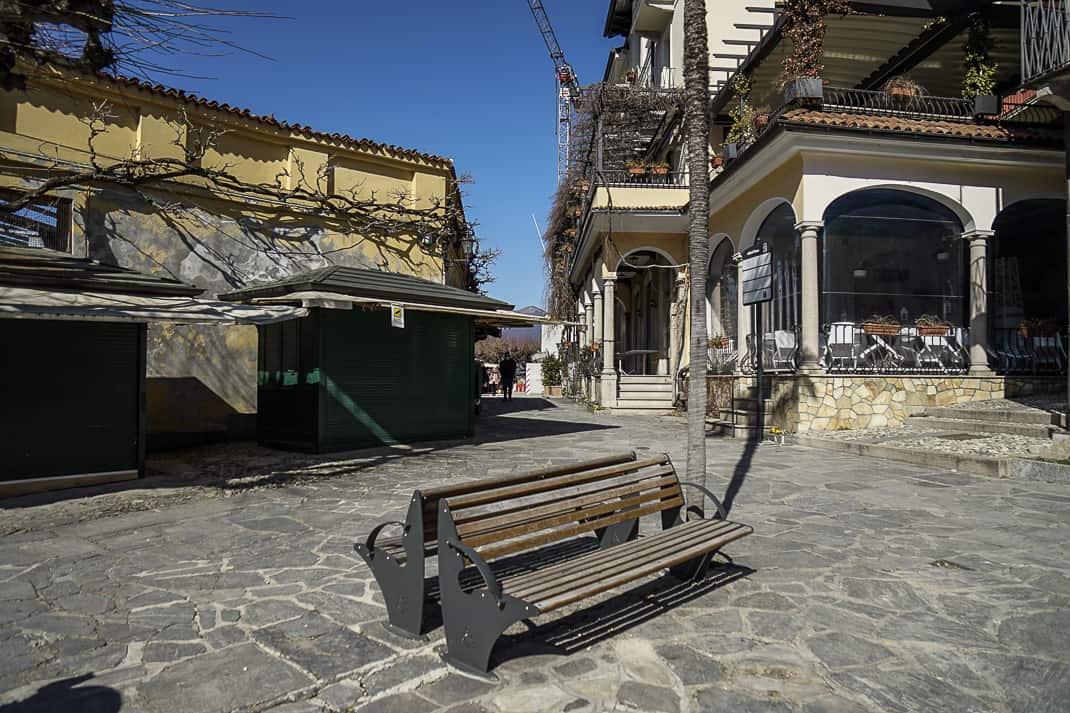
We meandered through the narrow, window alleys, up staircases. It was so quiet, we could hear the water lap up against the island shores.
Lavish gardens, built in the 16th century, were closed. The island had exactly one souvenir stand open and one restaurant.
At the Lemontree, lined inside with rock posters, we sat outside in sunny 54 degrees and had an ice-cold Antoniana, a strong Italian craft beer. We had nothing to do and nowhere to go but so much to stare at.
You know the old cliche La dolce vita?
It’s not a cliche.
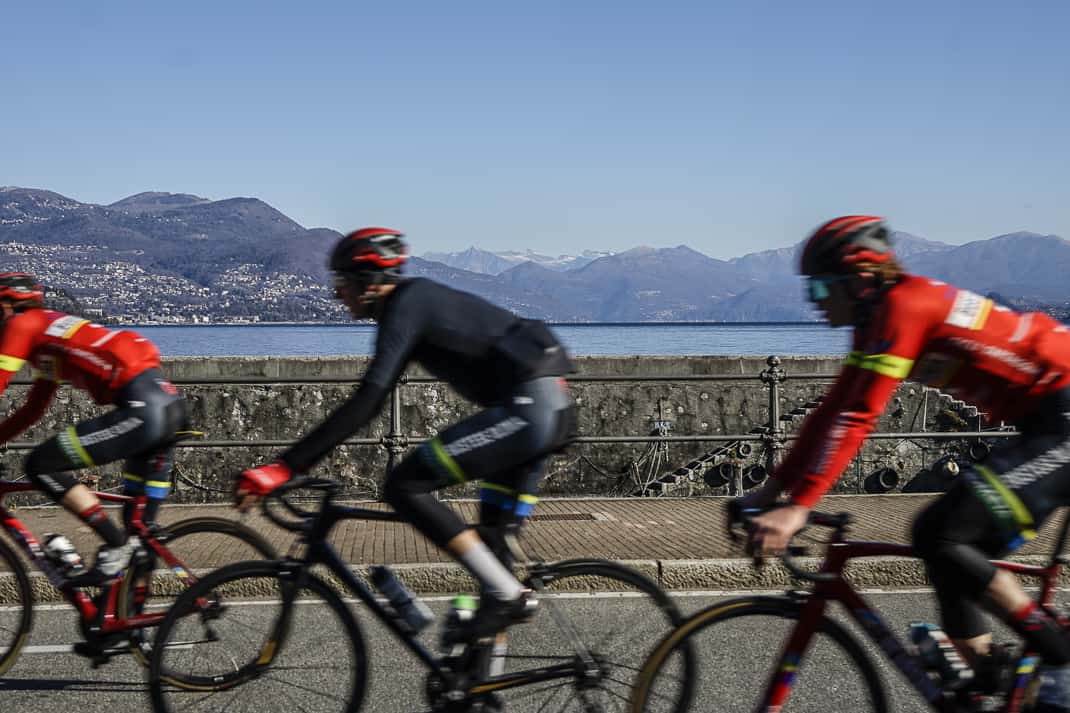
The locals
Time stands still in Stresa. Alberto Ferraris, 60, has lived in Stresa all his life. I got to know him as he worked various jobs between the Panorama Hotel and Lo Stonello, the elegant restaurant next door.
“It hasn’t changed a lot,” he told me. “Stresa is still a small town. During my childhood, we played football, went outdoors, went fishing. We learned to swim in the lake.”
I asked how much the Covid lockdowns hurt it. He chuckled.
“In winter it’s always in lockdown,” he said. “It wasn’t so bad.”

In winter in Italy, give me an enoteca and one trattoria and I’m pretty happy. Piedmont cuisine is underappreciated in Italy. It sports the best risotto, a thick rice soup, in the world and at the Osteria Mercato I had the best risotto of my life: risotto with beans and Piemontese salami and Piemontese cream. Rich, creamy and thick with salami and sauce.
The next night at Lo Stornello, a beautiful romantic spot of only nine tables, I had the risotto with a big pile of red onion on top to add a sweet finish to the creamy rice.
We left vowing we’d return to Stresa. At least that will give me one thing in common with Hemingway.
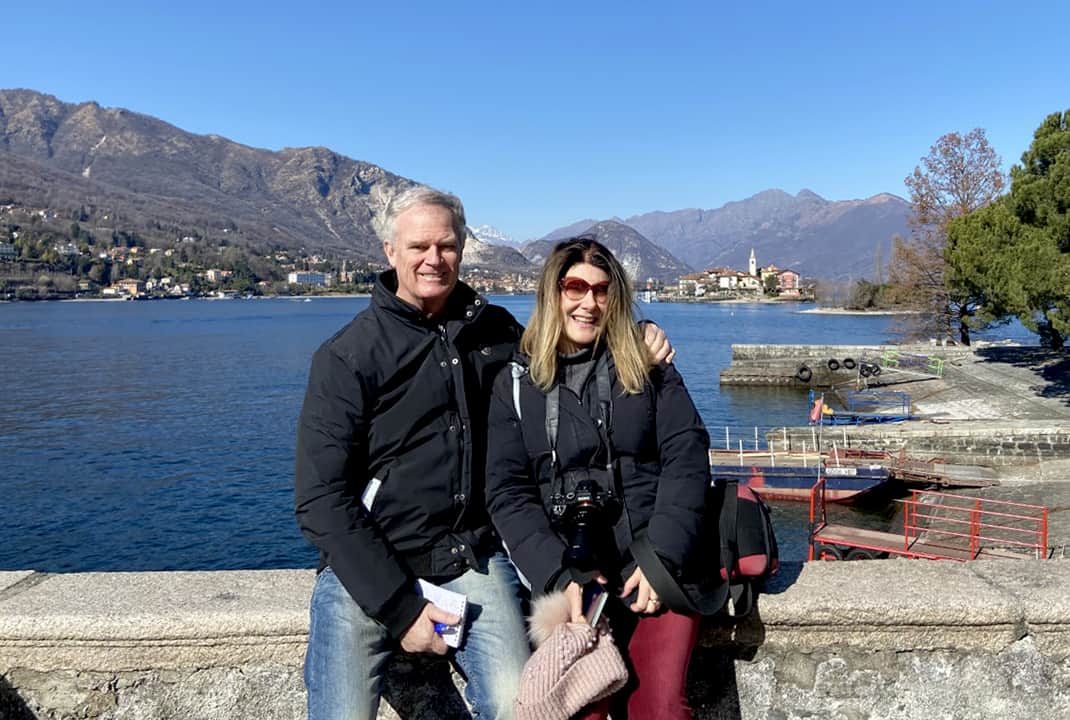
In case you want to go …
How to get there: Numerous direct trains daily from Milan Centrale to Stresa. About one hour for 8.60 euros.
Where to stay: Hotel Primavera, Via Cavour 39, 39-03-233-1286, Primavera – Guest Reservations, hotelprimavera@stresa.it. Pleasant three-star hotel in the old town 50 meters from the lake. I paid 94 euros a night for a double.
Where to eat: Osteria Mercato, Piazza Capucci 9, 39-03-233-46245, Osteria Mercato Stresa, osteriamercato.stresa@gmail.com, 11:30 a.m.-3 p.m., 7-11 p.m. Wednesday-Monday. Fantastic local cuisine, especially the risotto dishes. 12-22 euros.
Lo Stornello, Via Cavour 35, 39-03-233-0444, www.ristorantelostornello-stresa.it, lostornello@stresa.it, Elegant restaurant adjacent to Hotel Primavera. It’s in Italy’s Michelin 2020 guide. Mains starting at about 12 euros.
When to go: August is warmest with average high of 84 and low of 62. It’s crowded but they’re spread out over the mountains, the lake and islands. September is ideal with high of 74 and low of 54 with only eight days of rain. In February it’s 30-50 with five days of rain.
For more information: Tourist Office, Piazza Marconi 16 (ferry dock), 39-03-233-1308, www.stresaturismo.it, info@stresaturismo.it, 10 a.m.-12:30 p.m., 3-6:30 p.m. closed Saturday afternoon and holidays.


March 9, 2022 @ 3:19 am
John, thanks for that report on Stressa. Last year I purchased a motor home and drove the coasts of Italy, -4 months and 8000 Kms. On my way back to Amsterdam, I drove through Lake Como and loved it but it was too slow in the off season, too busy in the high season. This year, I intend to spend more time in northern Italy. I have one very general question: Besides Rome, if you had a choice to live on one other place in all of Italy, where would it be as a full time resident? -Not as a tourist.
March 9, 2022 @ 7:02 am
John, excellent review, as always.
We were on the northern end of Lake Maggiore with our grandkids last summer when we took a side trip to have lunch in Domodossola, then returned to Switzerland via Locarno. We have previously stayed on Lake Lugano and Lake Como. (The latter for a NATO conference the week George Clooney was prepping for his wedding at a villa across the lake from us. We were talking about different issues, however.) Our daughter went to school in Trento for a semester, at the northern end of Lake Garda. You cannot help but love alpine lakes.
The best risotto we had in our years in Italy was in Firenze, at a little trattoria in the city center that was recommended by our hotel concierge. Also during mid-winter. Meravigliosa!
And you are absolutely right about Barolo and Nebbiolo. Pretty good taste for a sports writer!
Best from Colorado.
March 10, 2022 @ 5:03 pm
Grand Hotel Des Iles Borromee looks amazing, if ever in Stresa a night in one of the less expensive rooms has to be considered, the worthy bank breaker of a budget itinerary.
April 13, 2024 @ 4:52 pm
My husband and I discovered Stresa in 2022 and decided to buy a little villa on a hill above town, with an incredible view of the lake. i have traveled back about six or seven times – in just about every season – over the course of our renovation. It is always welcoming and gorgeous (though parking is not easy in the height of summer or on busy Sundays when everyone comes out to walk the promenade). My favorite time (so far) is late September or early October. Glorious weather! All the gardens are still in bloom, the ferries make the lake easy to navigate, and the piazzas are great for people-watching. The enoteca and Barolo are wonderful year-round, but fall is also best for truffle dishes and flavor.
April 14, 2024 @ 8:37 am
Sounds like a great investment, Lauren. How much of a hassle was it to buy? I’m still renting. You don’t get the gang for your buck in Rome as you do in the U.S. Plus the resale value is terrible.